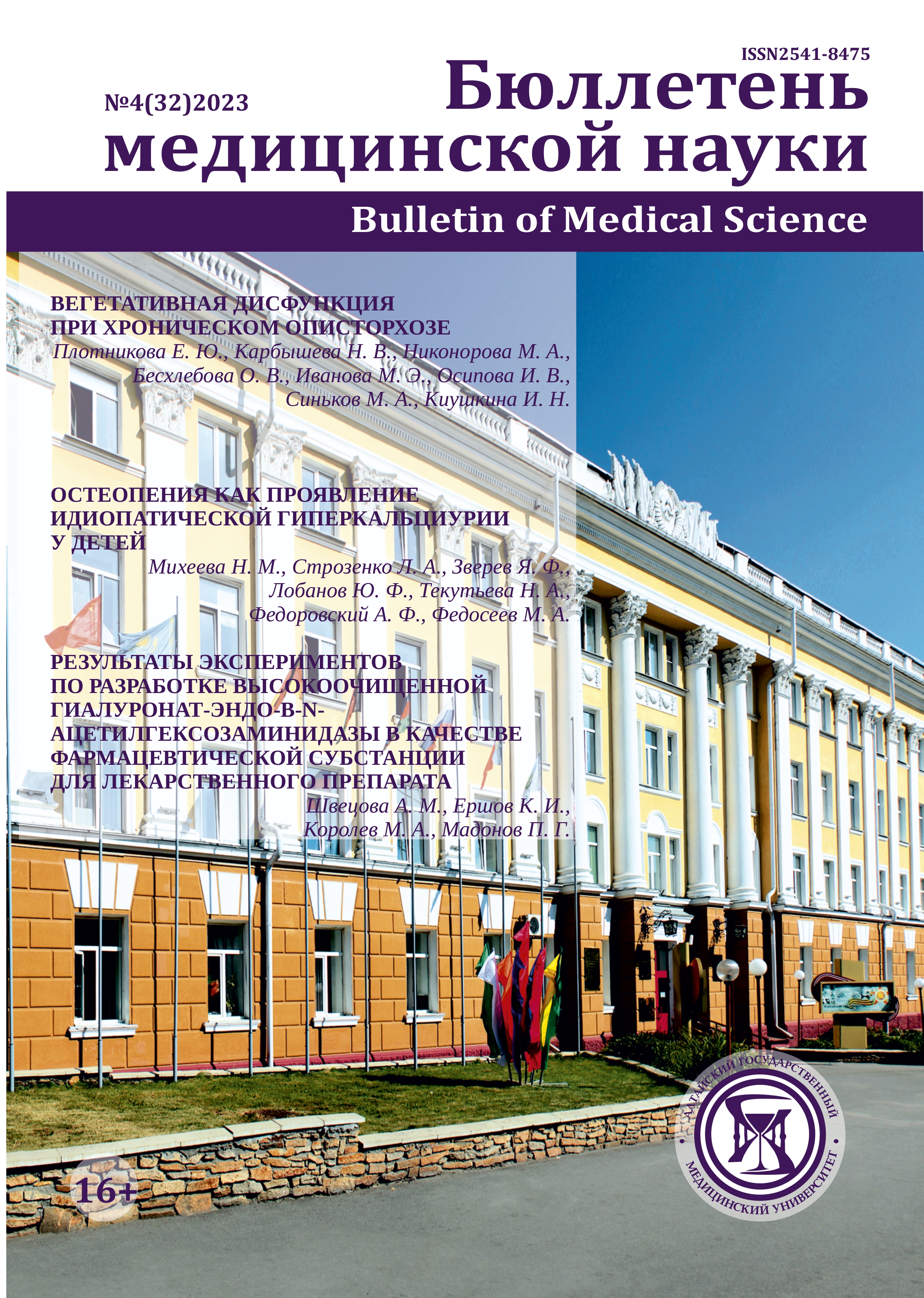ENDOTHELIAL DYSFUNCTION IN CHRONIC OPISTORCHIASIS
УДК 616.12-009.86:611.018.74:616.995.122
DOI:
https://doi.org/10.31684/25418475-2023-4-16Keywords:
chronic opisthorchiasis, endothelial dysfunction, extracellular vesicles, flow cytometryAbstract
Relevance. The basis of the complex, in some cases, of interrelated pathological processes in opisthorchiasis invasion may be endothelial dysfunction, which provokes the risks of cardiovascular events, and is an important aspect in establishing pathogenetic connections between diseases of the liver and the cardiovascular system. When assessing the inflammatory process in the pathogenesis of invasion, there is increasing interest in the contribution of not only cellular elements and circulating inflammatory markers, but also in intercellular communication and regulation through microvesicles. Purpose of the study. To study the circulation of extracellular vesicles, which are associated with blood and endothelial cells, in patients with chronic opisthorchiasis. Materials and methods. The study was conducted on two groups of people (men and women aged 18 to 55 years (34.3±1.3 years)). The experimental group included patients with chronic opisthorchiasis (n=26). There was the control group (n=14) matched by gender and age with experimental group. The qualitative composition and quantity of extracellular vesicles (EVs) was determined by flow cytometry. Results. In the experimental group, there was a significant increase in the number of CD41+ events (platelet EVs) 2 times (from 120 to 245 events/μl (p = 0.030), CD45+ events (panleukocyte EVs) - more than 120 times (from 95 to 11713 events/μl (p=0. 0330), as well as a trend towards an increase in the rate for CD31+ events by 19.8 times (from 495 to 9818 events/μl (p=0.133) in comparison with control group. Screening assessment of the CD9+ population of platelet EVs (CD41+31+CD9+), endothelial EVs (CD41-31+9+) and leukocyte EVs (CD45+CD9+) showed a significant (p=0.0330) increase in events, while their content corresponded to the data obtained by CD31+41+ events in quantitative terms. For endothelial EVs, there was a significant increase in the proportion of CD9+ events from 23.3% in the control to 46.2% in the experimental group, while for leukocyte EVs there was no statistically significant change in the percentage ratio, and it was 9.9% in the control and 12.9% in the experimental group. Conclusions. These results can be considered from the perspective of platelet activation, as well as the development of the inflammatory process and endothelial dysfunction, where microvesicles can act as potential highly sensitive markers for opisthorchiasis invasion.













